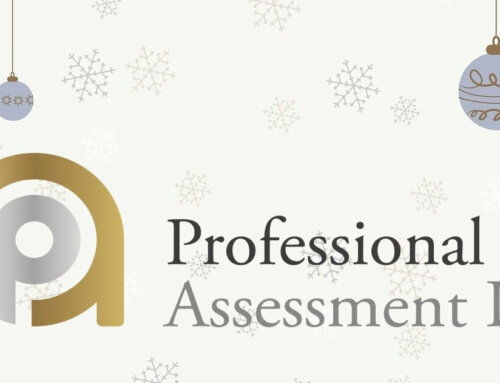PAL’s Director of Audit and Compliance, Rupert Crossland, provides a summary of the recently announced changes to the apprenticeship funding rules.
On the 15th of July, the ESFA published the latest version of the apprenticeship funding rules. In this release, labelled the ‘Clarification Version’, some of the changes will already be familiar to providers and employers. For example, it is common knowledge that all apprenticeship starts from the 1st of August 2020 must be on standards rather than frameworks.
Whilst the recently announced incentive payments will drive demand, the changes to the rules have not significantly changed the market for apprenticeships. However, it is important for providers to be aware of the key points for their business strategy, as well as their compliance, safeguarding of funding and supporting employers.
Some of the more material changes for providers to administer include:
Off-The-Job Training
For starts since the 1st of August 2019, actual off-the-job training hours must be recorded in the ILR at the end of the practical period. There must also be evidence of delivery of the off-the-job hours and this must correspond with the actual hours entered on the ILR.
Planned Hours Agreed Versus Actual Hours Delivered
If it becomes clear during the programme that the apprentice can complete earlier than planned (although minimum durations still apply), this must be agreed on a new commitment statement.
At the end of the programme, if the actual off-the-job training hours are less than the planned hours, you must produce a statement with:
• The originally planned hours, the actual hours and the difference between them;
• The reason for the difference (e.g. apprentice completed over a shorter timescale or prior learning identified partway through the apprenticeship);
• Confirmation that the actual off-the-job training hours represent 20% of the actual programme duration;
• Confirmation that the actual duration meets minimum requirements (12 months practical period, extended proportionately for apprentices working less than 30 hours);
• The employer and apprentice must countersign the statement and must confirm they are satisfied with the actual quantity of training delivered.
Maternity, Adoption and Shared Parental Leave
Apprentices on maternity, adoption or shared parental leave may use their statutory keep in touch days for off-the-job training. When the apprentice and employer request this, you must complete an agreement including:
• The apprentice’s reason behind the request to continue apprenticeship training during KIT/SPLIT days;
• The number of KIT/SPLIT days intended to be used and the type of training and number of hours proposed to be undertaken on these days. Any training carried out any KIT/SPLIT day would constitute a day’s work (and therefore one KIT/SPLIT day);
• The employer’s support and endorsement of this use of KIT/SPLIT days;
• The provider’s support and endorsement of this arrangement;
• An acknowledgement by the apprentice that in undertaking training and/or assessment, including end-point assessment, on KIT/SPLIT days this will impact on their entitlement to KIT/SPLIT days as well as statutory maternity/adoption/shared parental leave and pay (i.e. they may lose statutory maternity/adoption/shared parental leave and pay if KIT/SPLIT days are exceeded); and
• An agreement by the employer and provider in relation to the timing of KIT/SPLIT days relative to the monthly payments that the provider will continue to receive if a break in learning is not utilised.
Monthly payments will not continue during a 12-month maternity absence if only 1 KIT day is used on off-the-job training.
Further information on actions to take will be in Version 1 of the rules, remember this is the clarification version.
Commitment Statement
If providers’ own formats of commitment statements do not already include confirmation that the employer should be released for off the job training, they must now add this.
Negotiated Price
It must be clear in the evidence pack not only if the price changes but why it has changed.
Redundant Apprentices
New requirement to provide a redundant apprentice with a record for part completion. This must include:
• The apprentice details;
• The level and subject;
• The start date and planned end date;
• The percentage of the apprenticeship completed;
• A summary of the knowledge, skills and behaviours that you consider they have developed and evidenced; and
• For apprenticeships with mandatory qualifications, the qualification or units achieved.
Employer Providers now need to evidence that they have supported redundant apprentices to find a new role. This was already a rule for providers. This is a sign it has increased focus from the ESFA and, as the number of redundant apprentices is predicted to increase, providers should ensure compliance.
Incentive Payment for Employers of New Apprentices
As has been previously reported, from the 1st of August 2020, employers will be eligible to receive an incentive payment for hiring a new apprentice if the apprentice is a new employee. The payment is £2,000 if, on the apprenticeship start date, the apprentice is aged between 16 and 24 years old (or 15 years of age if the apprentice’s 16th birthday is between the last Friday of June and 31 August inclusive) or £1,500 if, on the apprenticeship start date, the apprentice is aged 25 years old or over.
What has been newly stated in the funding rules is that all employers must use the apprenticeship service to claim this payment.
The evidence requirements for the incentive payment have been stated in the funding rules for employers:
• Confirmation of the apprentice’s date of birth;
• A copy of the apprenticeship agreement;
• A copy of the apprentice’s employment contract (if different from the apprenticeship agreement), including their start date;
• Confirmation they were a new employee i.e. not previously employed by the employer within the last 6 months. This could include evidence from payroll and/or vacancy adverts and recruitment documentation;
• If relevant, confirmation that the apprentice had previously been made redundant from an apprenticeship starting before the 1st of August 2020. This must be a notice of dismissal, stating the reason as redundancy. This evidence requirement will only apply where the apprentice has previously been made redundant from an apprenticeship with another employer and their apprenticeship agreement from that previous employment started before the 1st of August 2020.
Version 1 of the rules is expected soon. We will provide an update if there are further changes or clarifications.









